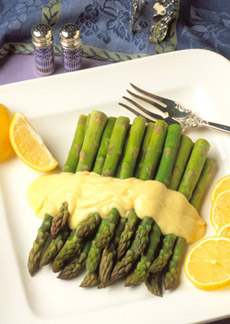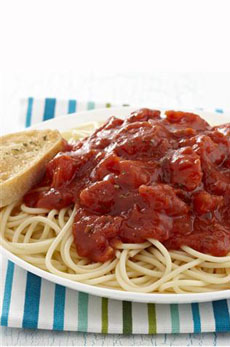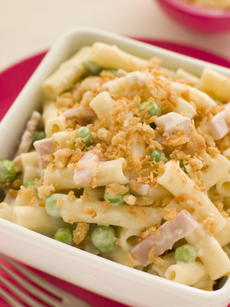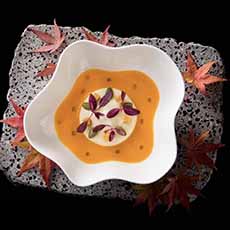The Mother Sauces Of French Cuisine: Love Your Mother!
|
What are the “mother sauces?” Today’s tip, from chef Johnny Gnall, explains them and sets you on the path to making each one. This article continues with part 2, the secondary sauces made from the mother sauces. If you have questions or suggestions for tips, contact JohnnyGnall@hotmail.com.
When Georges Auguste Escoffier* laid the foundation for French cooking that would become so significant for modern cuisine, a cornerstone of that foundation was what he called the “mother sauces.” These five sauces are the basis for virtually every sauce in Escoffier’s arsenal, and their applications are no less relevant today. If you can perfect the five mother sauces, you can take them in any flavor direction you choose, from Asia to Africa to Scandinavia, simply by adjusting the flavors and seasonings you choose to add to them. The techniques are classic French, but the sauces themselves are versatile enough to work with whatever you’re cooking for dinner. Each mother sauce is comprised of two basic parts: a liquid and a thickening agent. Each sauce has its variations and additional ingredients, but the liquid and thickener are the important parts. So without further ado, allow me to introduce the five mother sauces. *Escoffier, 1846-1935, was one of the most important figures in the development of modern French cuisine. A chef, restaurateur and culinary writer, Escoffier simplified and modernized the ornate haute cuisine style of the great French chef Antoine Carême (1784-1833). Escoffier’s book, Le Guide Culinaire, is still used as a major reference work by chefs and culinary students. Tomato sauce (photo #2) is is probably the most familiar of the mother sauces, and one you have eaten with pasta or meatloaf more than a few times. To make it: |
 [1] Eggs Benedict topped with hollandaise sauce (photo © American Egg Board).
|
|
|
†A roux, pronounced rue, is a paste made of softened butter and flour that is used to thicken sauces, soups, stews and ragouts. |
||
 [3] Asparagus with hollandaise sauce (photo © American Egg Board).
|
You may know it best from Eggs Benedict at Sunday brunch (photo #1), but hollandaise (HOLL-un-days) is actually the basis for a number of sauces, Béarnaise being one of the more notable. As it is egg-based, it’s definitely the richest of the mother sauces, which also seems to make it the most luxurious. Hence, it is a favored presence in lavish or celebratory dishes. 3. BÉCHAMEL SAUCE A common start to many favorite cream soups, a béchamel (BAY-sha-mell) is relatively easy sauce to make. |
|
|
The simplest of the mother sauces, a velouté (vuh-loo-TAY) is a common start to dishes involving more delicate flavors and ingredients. If you’re eating fish with a sauce that’s not some variation of a buerre blanc, it’s likely that sauce started with a velouté. Though also often called simply ”brown sauce,” espagnole (ESS-pon-yole) allegedly earned its name when Spanish cooks added tomatoes to a French veal-based sauce, and the improvement stuck. While it is slightly more complicated, espagnole sauce incorporates several of the procedural steps from previous mother sauces. ________________ These five sauces are the basis of literally hundreds of variations, so it’s worth it to take the time to master them. Be patient as you cook them and pay attention to how they react during different steps, as this will give you clues on how to fix them if they aren’t coming along the way you expected. If your hollandaise breaks, for example, you can start it over and use the broken sauce in place of the original melted butter, adding it to new yolks. Just make sure to add it even slower at the beginning and whisk it even faster. Once you feel completely comfortable with these five “mothers,” it’s time to start adding ingredients, both to replicate classic sauces and to create new ones that reflect your interests. Add cheese to béchamel and It’s a mornay, a classic sauce. But what if you decide to add adobo chiles or chipotle paste to a béchamel? The sky’s the limit. Tomato sauce becomes Creole sauce, hollandaise becomes béarnaise and other transformations, here. |
||


